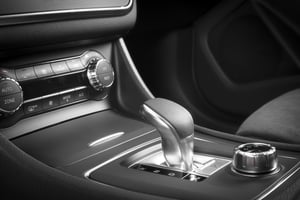
Fogging
Determination of the fogging behavior of materials used in vehicle interiors
FOGGING TEST IN THE
AUTOMOBILE INTERIOR
CORROSION TESTING IN A SALTY ATMOSPHERE
Corrosion testing in a salty atmosphere in the automotive sector is a test procedure in which components and materials are specifically exposed to an environment that simulates high salt concentrations and moisture.
In the automotive sector, vehicles are often exposed to extreme weather and road conditions, such as salty air in coastal areas or road salt in winter. Corrosion testing in a salty atmosphere ensures that materials such as metals, coated parts and even plastic composites can withstand these influences in the long term.
- Typical procedure
- Application examples
Typical sequence of a salt spray test
Application examples for material types and components (automotive)
- Metallic components: Body parts, chassis components, nuts and bolts
- Coated materials: Painted surfaces, powder coatings, galvanized parts
- Composite materials: plastic parts with metal coating or metal reinforcement
- Electronic components: Cable connections, connectors, sensor housings
- Vehicle components: Exhaust systems, wheel rims, brakes and other exterior attachments

Fogging test methods
- DIN 75201-A (reflectrometric)
- DIN 75201-B (gravimetric)
- PV 3015 (Volkswagen)
- GMW 3235-A (General Motors Worldwide)
- PSA D45 1727
- and much more.
Test methods / specifications
- DIN EN ISO 9227
- DIN EN ISO 11997-1
- ASTM B117
- VW PV 1210
- BMW AA-0324
- and much more.
Are you looking for an exam? Standard? Specifications?
Accredited & certified tests
CONTACT OUR EXPERTS
Description. Lorem ipsum dolor sit amet, consetetur sadipscing elitr, sed diam nonumy eirmod tempor invidunt ut labore et
- Tab Title






OUR SERVICE FOR YOU
Rely on over 30 years of automotive testing expertise
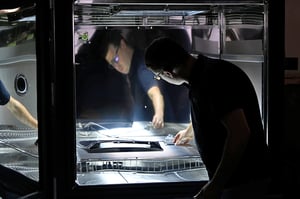

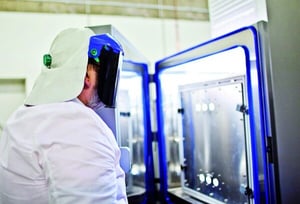
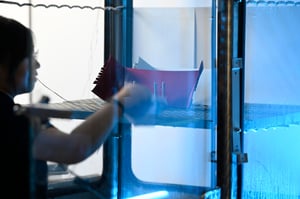
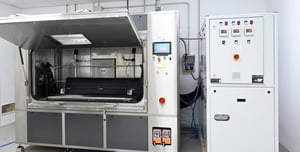


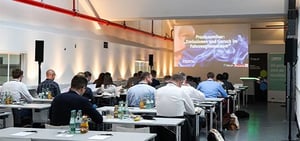
Box Description
Frequently asked questions about the fogging test
The sample quantities required for a fogging test depend on the standard and the test method used. Here are the general guidelines:
1. standard DIN 75201 (type A and type B)
-
Type A (glass plate method):
A sample quantity of 10 cm² is typically required. The sample is placed on a heated plate in a sealed chamber and the volatiles released condense on a glass plate above. -
Type B (aluminum foil method):
Similar to type A, a sample volume of approximately 10 cm² is used. However, the volatile substances condense on a cooled aluminum foil.
2. standard ISO 6452 (international standard)
- Sample quantity:
Again, a sample size of about 10 cm² is typically required to evaluate the amount of volatiles released at elevated temperature.
3. other specific requirements
Depending on the specific requirements of the customer or OEM standards, sample quantities may vary. It is important to check the respective standards or test requirements carefully.
Method A - Reflectometric method:
- Principle: This method measures the change in reflectivity on a glass plate on which volatile components from the material sample are deposited.
- Procedure: A material sample is heated in a beaker while a glass plate above it is cooled to 21°C. The temperature difference causes the volatile components to condense on the glass plate. The reflectance index of the fogged glass plate is then measured to determine the amount of condensed material.
- Application: This method is particularly suitable for materials for which an exact determination of the optical fog effect is required.
Method B - Gravimetric method:
- Principle: This method measures the weight of condensed volatiles on an aluminum foil.
- Procedure: The material sample is heated in a beaker while an aluminum foil disc is cooled to 21°C. After 16 hours, the amount of condensed material on the foil is weighed.
- Application: This method is ideal for an accurate quantitative determination of the amount of condensed volatiles.
ENVIRONMENTAL SIMULATION
FREQUENTLY ASKED QUESTIONS ABOUT SALT SPRAY TESTING
- Temperature: 35 ± 2°C
- Humidity: ~100% relative humidity
- Salt solution: 5% sodium chloride in distilled water
- pH value: 6.5 - 7.2
- Duration: Depending on standard and customer requirements
Yes, we carry out tests in accordance with national and international standards and OEM-specific requirements. imat is accredited for the most important tests. Find out more about our accreditations here.
- Samples should be packaged securely for transportation and protected from moisture.
- Accompanying documents should contain all relevant information (e.g. offer number, sample designation) on the material.
